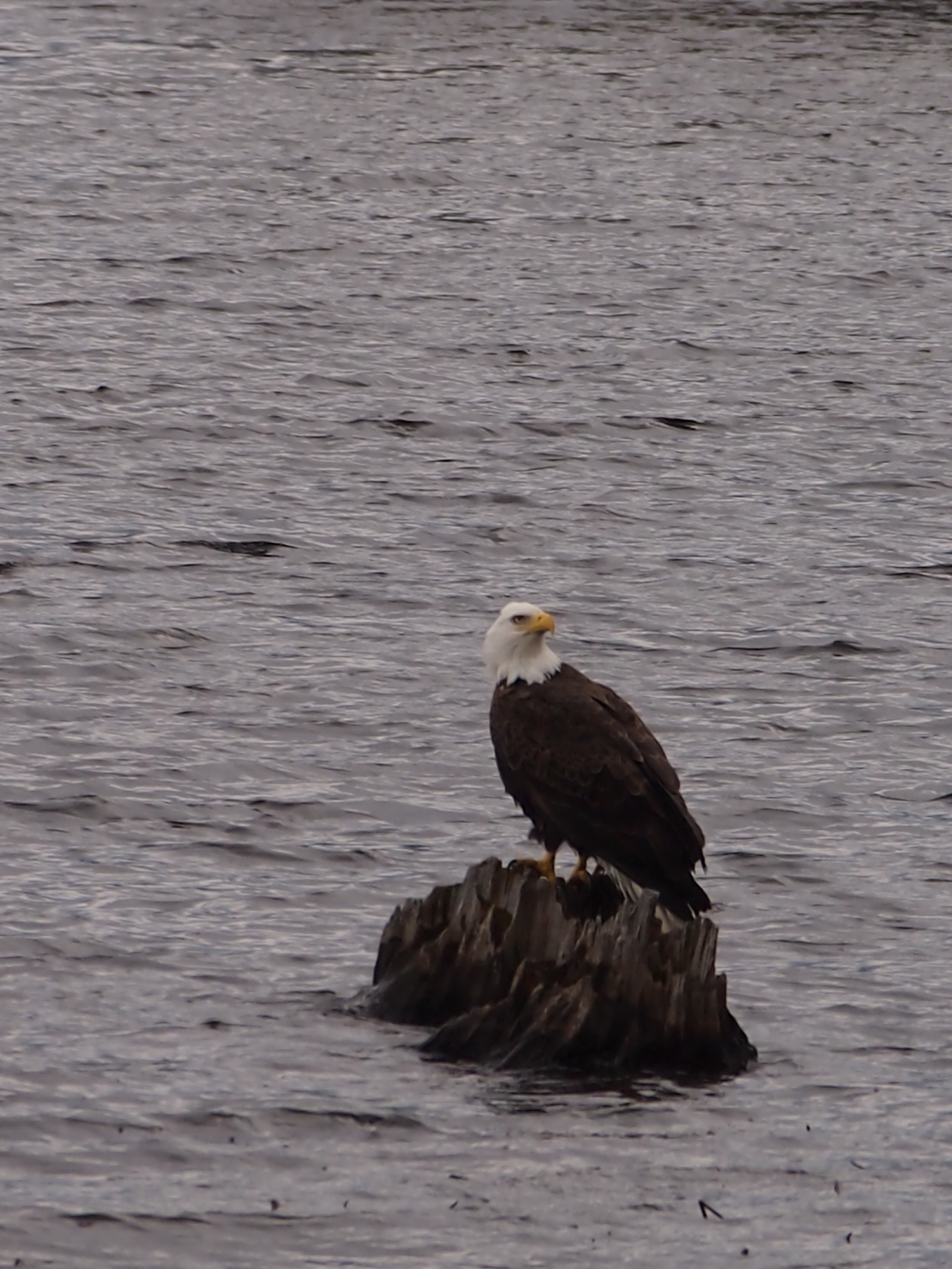Wildside: A look at the National Bird

Since we celebrating Independence Day, I thought would be fitting to write about our national emblem, the Bald Eagle.
The founding fathers saw this bird as beautiful, courageous, strong and independent, the embodiment of everything they believed in. At this time, the bald eagle was believed to be found only in North America; no Europeans would have seen it before arriving in the colonies. Legend has it that this bird was seen flying over a Revolutionary War battlefield in the early morning hours, its piercing cry a call to arms for freedom.
The bald eagle was part of the design of the Great Seal of the United States of America which was adopted in 1782. The Great Seal (or Presidential Seal) used the bald eagle as the symbol of power and authority. The bald eagle itself was officially adopted as the emblem of the USA in 1787. Since that time, the bald eagle has been used to represent strength, liberty, freedom and the very nation itself; I remember Sam the Olympic Eagle as the mascot when Los Angeles hosted the Summer Olympics in 1984.
As our nation’s emblem, the bald eagle has enjoyed special protection, including the Bald Eagle Protection Act of 1940. However, even with Federal protection, these birds were on the brink of extinction 50 years ago. There were an estimated 400 pairs of these birds left in the mid-1960s. Use of the pesticide DDT was thought to be the main cause for the species’ decline. The pesticide was banned, helping to slow and halt the decline of many bird species. I grew up in the 1970s, which has been called the era of the crying Indian because of a television commercial showing a proud Native American shedding a single tear when he saw people in the act of polluting. During this time, many laws were passed to halt pollution and to protect the environment and the wildlife that uses it. The Endangered Species Act of 1970 is an example, providing Federal protection to endangered wildlife and its habitat.
Today, the bald eagle is a conservation success story. With more than 2,000 pairs in the wild, the eagle was declared recovered in 2007 and removed from the federal list of threatened and endangered species. The bird is still protected, though, with layers of the Bald Eagle Act of 1940 (amended to include golden eagles in 1962), the Migratory Bird Treaty Act and the Lacey Act.
The Bald and Golden Eagle Protection Act specifically protects the bald eagle, its young or eggs, eagle nests and nest trees from “take.” Because the federal guidelines are long and complicated, Wisconsin DNR makes a simple and straightforward recommendation to landowners. The recommendation is based on 30 years of experience with eagle nest site protection and eagle nest surveys in Wisconsin. Wisconsin DNR recommends a 330-foot no activity buffer around active eagle nests for new activities such as construction of buildings, land clearing, roads, trails, timber cutting and other major land-use developments. If landowners follow the 330-foot no activity recommendation, then WDNR feels there would be no “take” based on Wisconsin conditions. Wisconsin DNR applies these recommendations on their own lands, and encourages county forests and private landowners enrolled in Managed Forest Law to do the same.
Bald eagles mate for life, and can live for 30 years. They usually choose a large white pine or other tall tree near or over water as a nest site. Pairs construct their nest cooperatively, returning to reuse it every spring. They lay 1 to 3 eggs in March, hatching in May or June. The immature birds take five years to reach adulthood. Bald eagles can be found nesting in at least 55 Wisconsin counties; of these, Vilas County wins the prize for the most eagles. With 1,318 lakes hosting clear, fish-laden lakes and tall trees for nesting, Vilas County hosts more than 100 bald eagle pairs.
Jeremy Holtz is a wildlife biologist with the Wisconsin DNR and writes a weekly column in the Star Journal. To contact him, call 715-365-8999.
Leave a reply
You must be logged in to post a comment.





